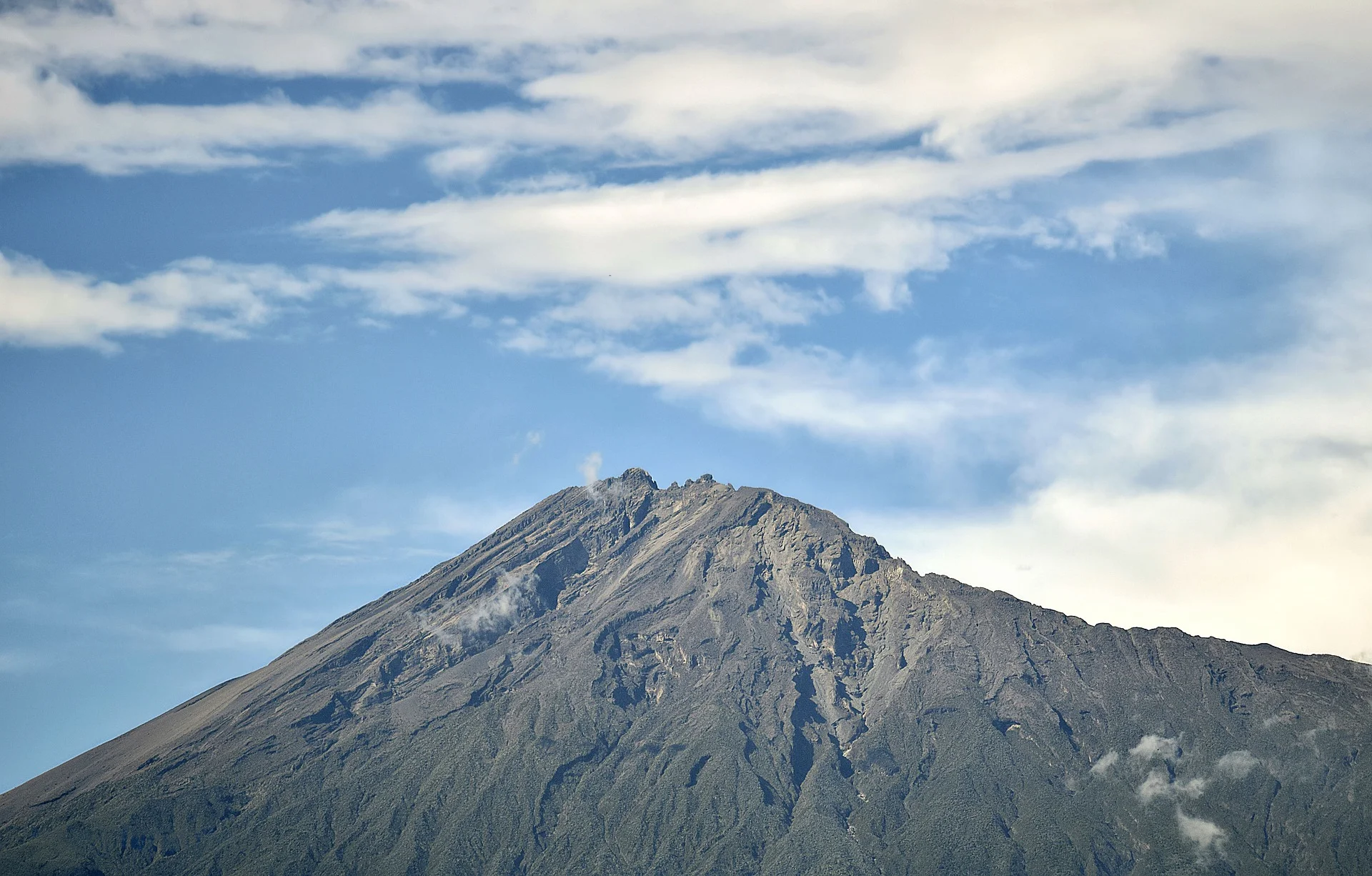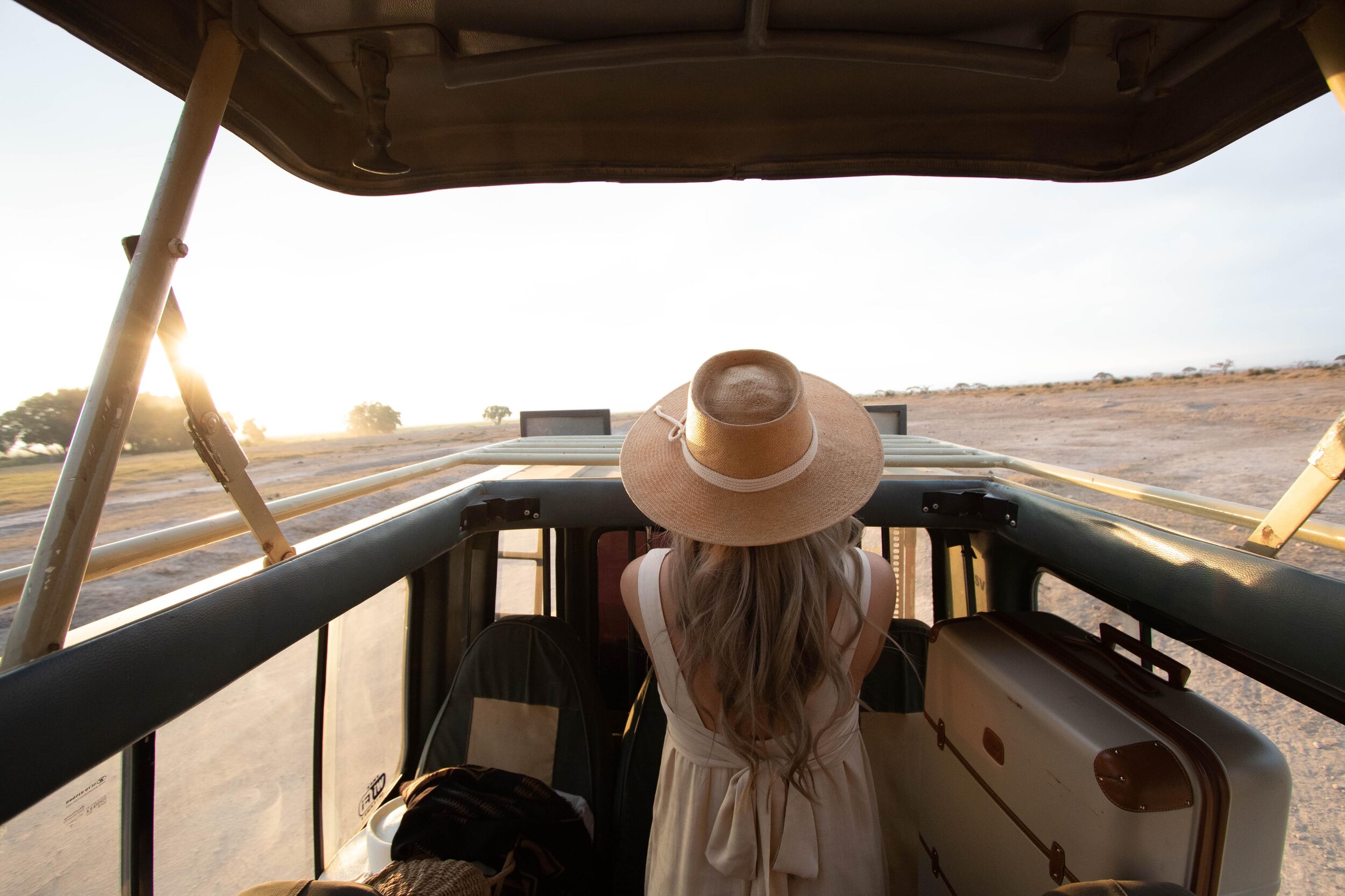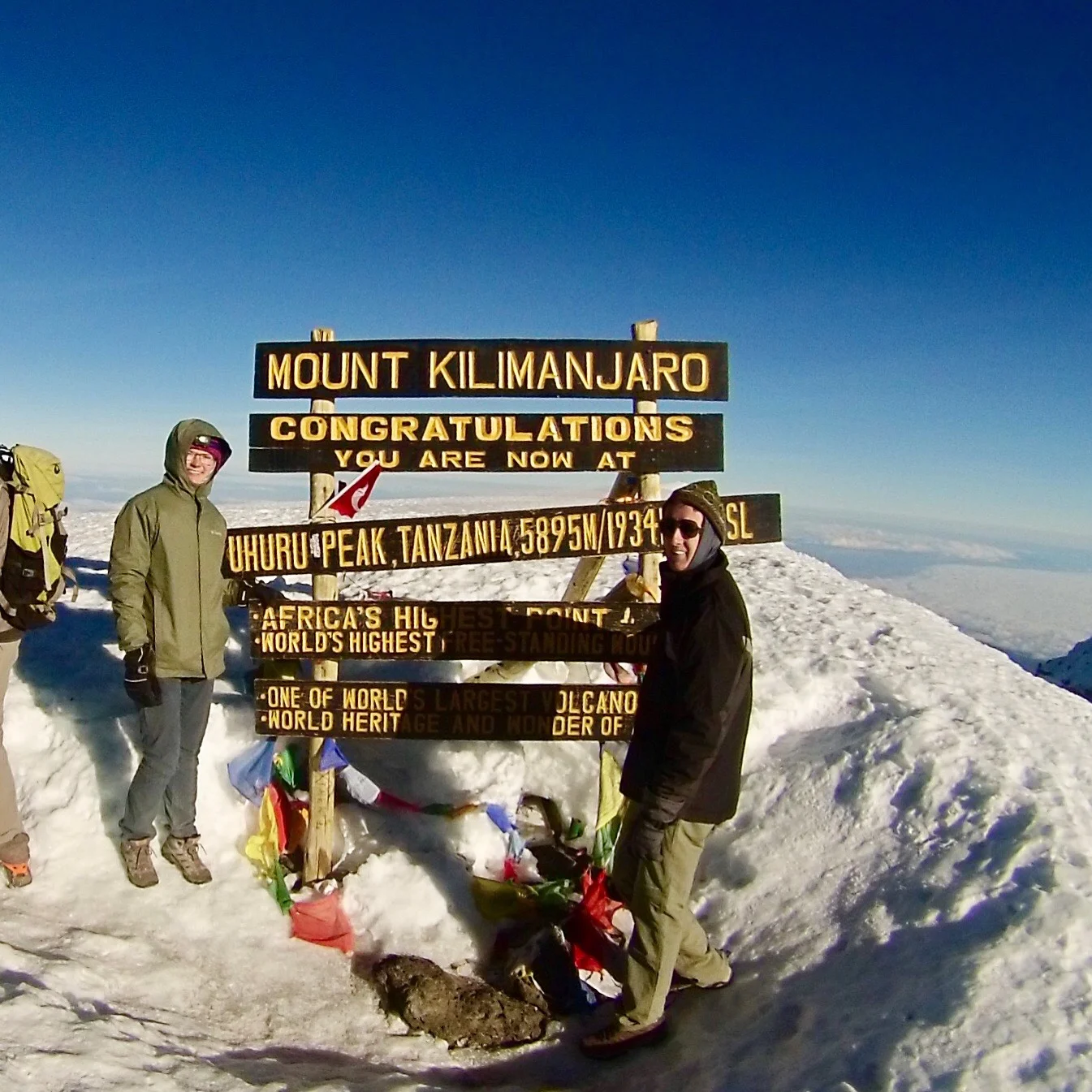Tanzania, for me, evokes images from The Lion King with its wide-open terrain and vast grasslands. Located in East Africa, this is one of the best places for game drives and THE scene for the Great Wildebeest Migration where almost two million mostly wildebeest, zebra, and antelope move through the Serengeti in search of water and food. One of the many advantages of choosing Tanzania for your safari is access to the biggest terrestrial conservation area in Africa and perhaps even in the world. Southern Tanzania offers Ruaha National Park and Selous Game Reserve while the Mahale Mountains National Park offers chimp trekking in the rainforest. Other reserves include Grumeti, Selous, Ruaha, and Mahale.
Serengeti National Park - Serengeti National Park is perhaps the most well-known and most famous wildlife refuge in the world. It has one of the oldest eco-systems on earth and is famed for its annual migration, as more than 200,000 zebra and 300,000 Thomson’s gazelle join the wildebeest’s grazing trek. Even if you visit the park outside of the migration season, you will still be able to see buffalo herds, elephants and giraffe and thousands of eland, topi, impala, and Grant’s gazelle. The park has four different sections: Southern Plains, Seronera (Central), Western Corridor and the Northern Serengeti, each with its own unique terrain. Northern Serengeti is home to the migration river crossings of the Mara River, and the subject of many National Geographic documentaries. The best time to follow the wildebeest migration is December-July and to see predators, June-October. The predator viewing in the Serengeti includes 3,000-4,000 lion, a large number of cheetah, leopard and hyena. You can also spot porcupine, giraffe, jackal, mongoose, monitor lizard, aardwolf and baboons and monkeys including more than 500 species of birds.
Ngorongoro Crater - Tanzania is also home to a volcanic crater, the largest un flooded and unbroken caldera in the world, called the Ngorongoro Crater. A natural wonder, it is about 20kms across and 600 meters deep and 300 sq kms in area. It was formed thanks to a volcano that exploded and collapsed around millions of years ago. The cone of the volcanic caldera collapsed inward and created the wonderful safari park now teeming with wildlife. It is one of the best places in Tanzania to see the Big Five – the elephant, buffalo, lion, leopard and the rhino. The wildlife tend to stay in the crater all year around but since the crater can get busy with vehicles, off season could be a good time to visit. When the water levels rise in Lake Magadi, which is in the center of the crater, this results in higher concentrations of flamingos as well. Visiting the Ngorongoro Crater provides you with the opportunity to not only take part in a safari but to also interact with people from the Maasai tribe.
Arusha - Arusha is often called the gateway to northern Tanzania’s national parks and is particularly famous because of its proximity to Serengeti National Park. It is also the jumping off point to Mt. Kilimanjaro via the small town of Moshi. Arusha has its own mountain, Mt. Meru that many climbers use as practice before attempting the more intense Mt. Kilimanjaro, one of the world’s seven summits. One of the country’s most prosperous cities, Arusha is also a major international diplomatic club. It known as a multicultural city with Tanzanians of mixed backgrounds such as the indigenous Bantu, Arab-Tanzanian and Indian-Tanzanian population along with small White European and white American being the minority population. Religions include Christianity, Muslim, and Hindu.
Zanzibar – Zanzibar is known for its white sand beaches with palm trees swaying gently in the breeze. It is the semi-autonomous part of Tanzania and is composed of the Zanzibar Archipelago in the Indian Ocean, some 16-31 miles off the coast of the mainland. It consists of many small islands and two large ones. The main island, referred to informally as Zanzibar is called Unguja and the other one is Pemba. Unguja also is home to the capital, which is Zanzibar city, and the historic centre is Stone Town which is also a UNESCO World Heritage Site. The island of Zanzibar is also known as the Spice island and spice tours to working plantations provide tourists the chance to experience the cultivation of spices such as cloves, vanilla, cinnamon, and other spices. What you may not know is that Zanzibar does have some of the best beaches in the world, and the surf varies depending on which side of the island you’re on. The east coast offers waves that break over coral reefs and sand bars offshore. Low tide is a great time to explore small pools of starfish. On the northern side of the island, swimming in smooth beaches surrounded by blindingly white sands makes for a great trip away from the city. The south coast of Zanzibar is home to the sea turtle protection area, the Menai Bay Conservation Area, for the endangered species that breed on the island. Visitors can also stop at Jozani Forest to view the rare Red Colobus monkeys and other primate and antelope species.
Dar es Salaam – Dar es Salaam is the economic capital of Tanzania and is the largest city. The industrial area is the hub for exports throughout the country and government offices tend to have their main base here. Diplomatic missions as well as non-governmental organizations are also based in this city along with restaurants, shops and office buildings. Dar es Salaam used to be occupied by the Germans and as such remnants of German colonial presence can be seen in the architecture around the city. Some of the interesting sights around the city include the National Museum, the Village Museum and other markets. A walking tour of St. Joseph’s Cathedral, the White Father’s Mission House, the Botanical Gardens, and the old State House is a great way to get a feel for this city. Further north of the city lies Bongoyo Island Marine Reserve which has great snorkeling and diving for those who want to explore the coast.
For more information on Tanzania safaris, see detailed itinerary here.
Post written by Preethi Chandrasekhar.





































📍 Tanzania
7 days from $3,800
Limited to 16 travelers
See Details >
50% off with code: “50OFF”
For select travel dates until December 2025
Offer expires March 31st, 2025